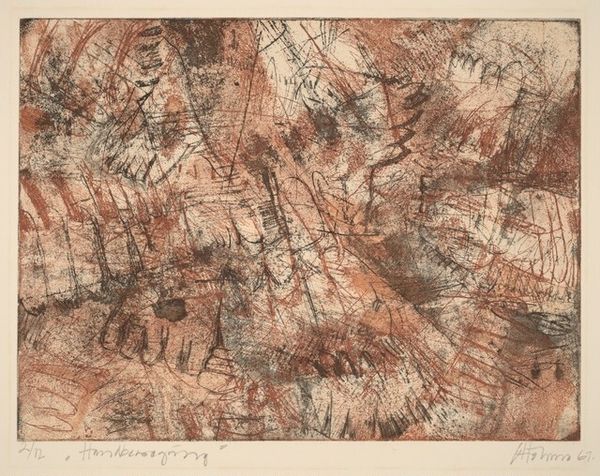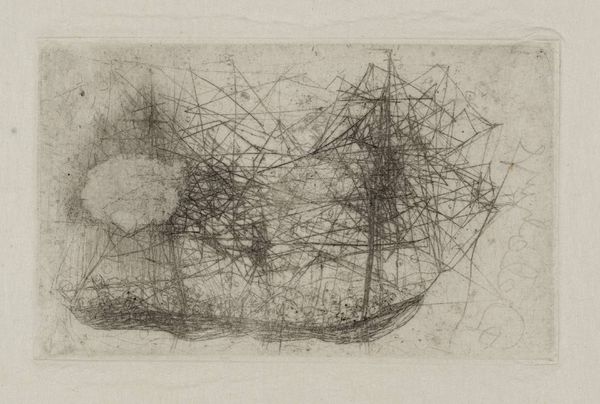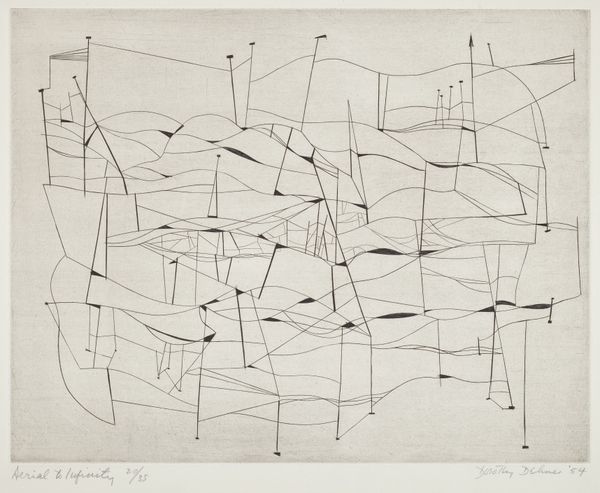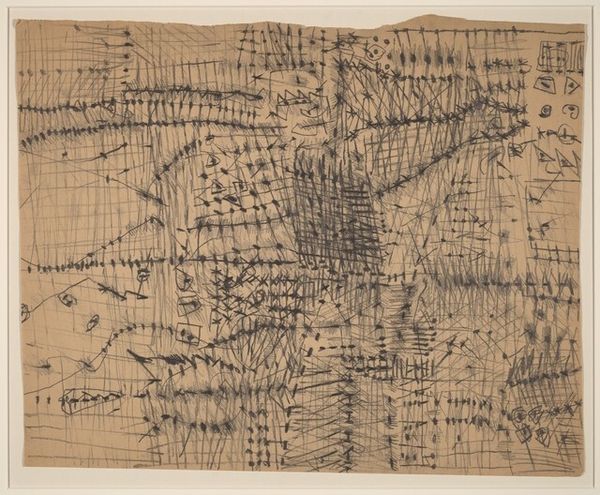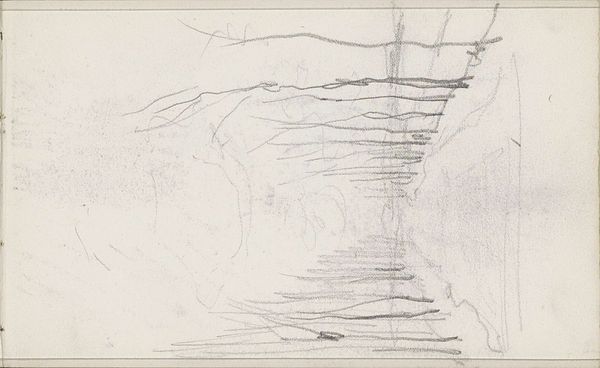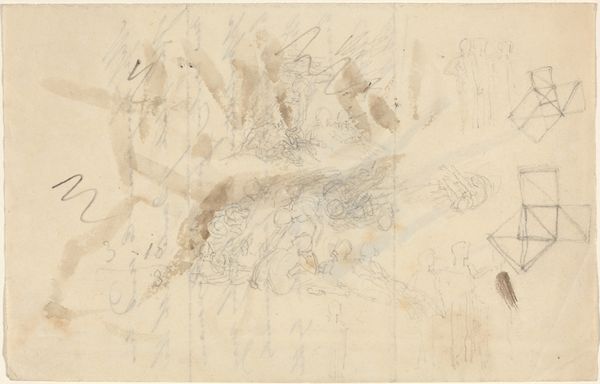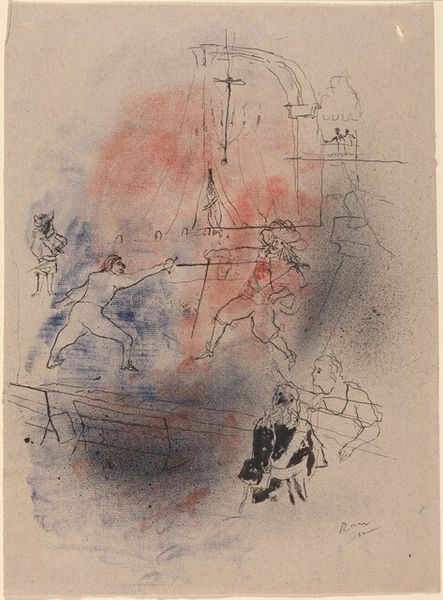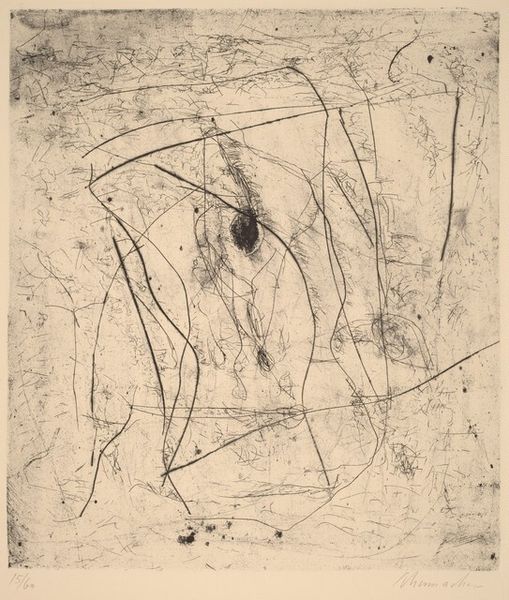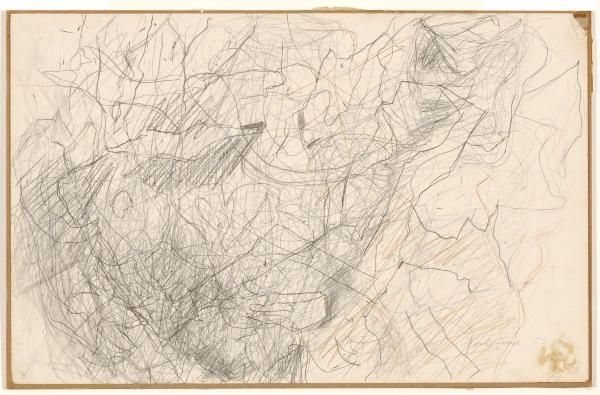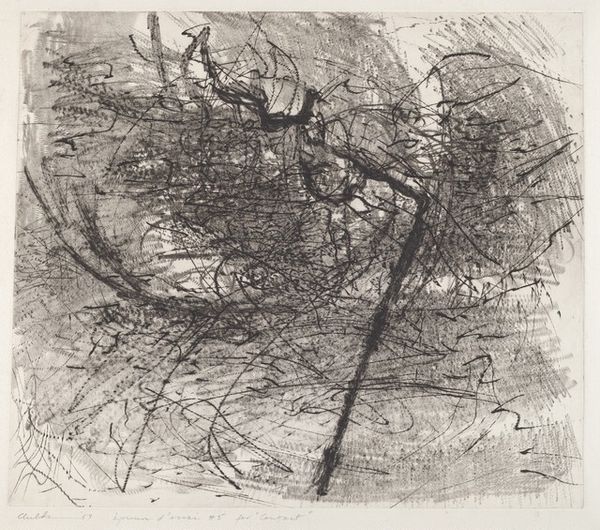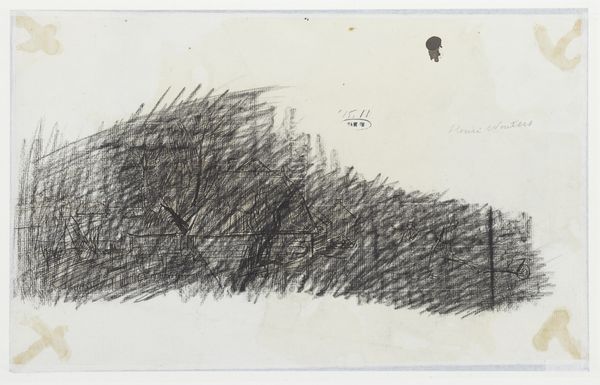
print, etching, intaglio
#
abstract-expressionism
# print
#
etching
#
intaglio
#
abstraction
#
line
#
modernism
Dimensions: plate: 17.5 x 32.2 cm (6 7/8 x 12 11/16 in.) sheet: 28.6 x 45.2 cm (11 1/4 x 17 13/16 in.)
Copyright: National Gallery of Art: CC0 1.0
Editor: This is "The Rainmaker," a 1955 print by Bernard Childs. It's an intaglio, an etching. The swirling lines feel almost chaotic, but also like they're building towards something. How do you interpret this work? Curator: I see "The Rainmaker" as an incredibly potent visual metaphor for the artist's own act of creation. In the context of 1950s Abstract Expressionism, particularly within the anxieties of the Cold War, consider the societal yearning for control over the uncontrollable – from weather to geopolitical tensions. Childs' work engages with this desire, while simultaneously surrendering to the unpredictable nature of the creative process. Editor: So, the chaos is deliberate? It's part of the message? Curator: Absolutely. Look at how he's layered the lines. It’s reminiscent of rainfall, yes, but also of energetic forces converging. Is he summoning, controlling, or merely representing? Think about the Rainmaker figure – throughout different cultures, it has symbolized the complicated dynamic between human intention, natural forces, and, inevitably, faith or belief. Editor: It does make me think about the artist as having a kind of power. The name almost suggests a ritual, not just weather. Curator: Precisely! Childs invites us to question the dynamics of power and representation itself. The “rain” could symbolize creative inspiration or some political and social influence. The mark-making—etching—suggests he embraces that idea fully. Does seeing it in this way shift your original reading of chaos, or do you notice something more specific now? Editor: It does! I hadn't considered the agency, or the potential connection to those broader themes, and the mark-making suggesting control or influence is really interesting! I now see more nuance. Curator: That's the beauty of art, isn't it? It invites us to engage with historical currents through feeling, making new readings possible.
Comments
No comments
Be the first to comment and join the conversation on the ultimate creative platform.
